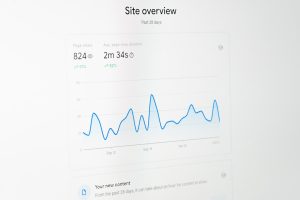
Artificial Intelligence is transforming education, and as we step into 2025, students now have access to an impressive range of free AI tools that simplify learning, research, and productivity. Whether you’re in high school or pursuing a graduate degree, these tools can help improve your workflow, enhance your understanding of complex topics, and boost your academic performance. In this article, we explore the best free AI tools for students in 2025, based on functionality, usability, and educational value.
1. ChatGPT (Free Version by OpenAI)
ChatGPT continues to be a widely-used AI assistant by students for a variety of academic tasks. The free version is accessible and practical for everyday educational needs.
Main Features:
- Essay assistance: Generate essay drafts, refine thesis statements, or suggest outlines.
- Study aid: Summarize textbook chapters or get explanations of difficult concepts.
- Language support: Translate text or clarify grammar points for non-native speakers.
ChatGPT’s intuitive chat-based interface makes it perfect for quick assistance during study sessions. Though limited in some advanced features compared to the paid versions, it remains a leading tool for general academic support.
2. Grammarly (Free Tier)
Grammarly remains a top AI-driven writing assistant used by students worldwide. Its free version is incredibly useful for improving writing quality and ensuring polished academic submissions.
Key Benefits:
- Grammar and spelling checks in real-time.
- Clarity and readability improvements with succinct suggestions.
- Browser integration for working directly in Google Docs, emails, and more.
Although the premium version offers more detailed feedback, the free tier covers the basic writing enhancements that every student needs.
3. Perplexity AI
Dubbed as “Google meets AI,” Perplexity AI is a powerful research assistant that presents concise answers with source citations.
Advantages for students:
- Reliable citations from scholarly and mainstream information sources.
- Summarized responses for essays, problem-solving, and exam preparation.
- Topic exploration with suggestions for related questions.
As accuracy and citation are essential in academia, Perplexity can significantly streamline the research process while maintaining credibility.

4. Canva Magic Design (Free Tier)
For students working on visual presentations, posters, or creative submissions, Canva’s integrated AI tools—especially Magic Design—are invaluable. The free plan provides AI-powered suggestions that automatically generate layout and design ideas.
Why it’s useful:
- Smart design templates for presentations, resumes, and reports.
- Drag-and-drop tools that simplify graphic design for beginners.
- AI content suggestions (with Magic Write) for titles, descriptions, and messaging.
Creating professional visual content quickly has never been easier for students, thanks to Canva’s AI enhancements.
5. Notion AI (Free for Students)
Notion is already known for its superb organization and note-taking system, and as of 2025, students with education email addresses can now use its AI tools for free.
Main AI features:
- Auto-summarize class notes for quicker reviews.
- Generate task lists or outlines based on prompts.
- Brainstorm ideas for projects, study plans, or group assignments.
With a vast array of templates and automation capabilities, Notion AI allows students to stay organized and efficient across multiple subjects and projects.
6. Quillbot
Paraphrasing and citation are important parts of academic honesty. Quillbot is a student-friendly tool that offers AI-powered rewriting and summarizing functionality, and it’s available in a robust free version.
Top features:
- Paraphrasing tool to reword sentences while preserving original meaning.
- Summarizer for condensing articles or research papers.
- Grammar checker to clean up academic writing.
Especially useful when editing first drafts or restating complex material in simpler terms, Quillbot helps students write more clearly while maintaining academic integrity.
7. Elicit
Elicit is an AI research assistant that has gained popularity by helping students and researchers find peer-reviewed articles, summarizing them, and assisting with literature reviews.
Important capabilities:
- Ask a question and receive structured answers from academic sources.
- Identify relevant papers and summarize their hypotheses and methodologies.
- Create matrices for comparing different study results.
This tool is ideal for upper-level students involved in complex research and those beginning their thesis writing journey.

8. Fireflies.ai (Free Plan)
Fireflies is an AI meeting assistant that transcribes and summarizes audio conversations. For students who record lectures or participate in study group calls, this tool can be transformative.
Features include:
- Automatic transcription of voice recordings, Zoom calls, or in-person lectures.
- Summary of key talking points after the session.
- Keyword-based search for locating important information.
By saving time on noting and reviewing discussions, Fireflies allows students to stay focused during the actual content delivery.
9. WolframAlpha
Often called the “computational knowledge engine,” WolframAlpha continues to be favored among math, science, and data science students.
It offers:
- Step-by-step solutions for algebra, calculus, and statistical problems.
- Graph plotting and symbolic calculations.
- Factual answers to a wide range of academic questions.
Its AI capability to interpret and solve problems makes it an indispensable resource for students in STEM fields.
10. SciSpace (formerly Typeset)
Formerly known as Typeset, SciSpace is an AI-powered tool designed for reading and understanding complex scientific papers.
What it offers:
- Ask questions on research papers and get AI-generated explanations.
- Highlight and annotate directly within the paper view.
- Simplified breakdowns of equations, charts, and concepts.
This tool is perfect for students working on assignments involving dense technical literature or journal articles.
Conclusion
The year 2025 offers students unprecedented access to powerful, free AI learning tools. From writing and summarization to research and organization, these tools not only save time but also enhance the overall quality of academic work. While AI should not replace deep thinking and personal comprehension, it serves as an excellent supplement to more traditional forms of learning.
Whether you’re tackling an essay, decoding a scientific theory, or organizing your semester, the above tools are gold-standard options in the AI learning ecosystem. Most importantly, they are free, reliable, and well-supported—making them indispensable for students navigating the demands of modern education.






